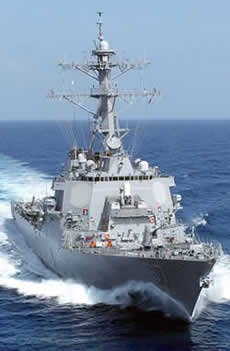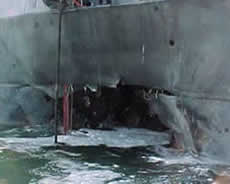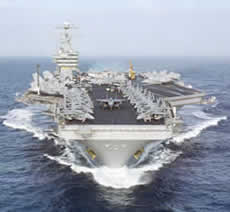USA PEOPLE SEARCH BY NAME!
- ❖ Current Address
- ❖ Phone Numbers
- ❖ Criminal Records
- ❖ Public Records
- ❖ Neighbors
- ❖ People's Age
- ❖ Property Ownership
- ❖ And Much More
Mon, 27 Jan 2014
The Aftermath of the Deadliest Attack against the USS Cole
Roughly a year before the tragedy of 9/11 left an indelible mark in the history of the USA, the USS Cole suffered a suicide attack that killed 17 American sailors. The USS Cole was a United States Navy guided-missile destroyer. It was being refueled in Yemen during the time of the bombing, an attack considered the deadliest against a USA Navy vessel since 1987.
Directly after the bombing, citizens of the USA found out about the realities of terrorism. A terrorist cell within the group called the Al-Qaeda claimed responsibility for the crime. A certain Osama Bin Laden was leading it. Sadly, the group was gravely underestimated then.
Random Anti-Terrorism Measures
The suicide attack was a deadly wake-up call for the Navy. They needed to reevaluate and work on improved force protection, shipboard equipment, damage-control training, mass-casualty response, and intelligence sharing. Now, more than a decade after, there has been a great amount of advancement in force protection. Everything from personnel requirements to logistics have been modified and training itself has stepped up and received a complete overhaul.
The USA Navy also put priority on a program called Random Anti-Terrorism Measures. Predictability is done away with in order to complicate terrorist plans that intend to study and seek out a pattern in the Navy's security measures.
The Cole Scenario
The rules of engagement at that time meant that its guards could not fire upon the explosive-laden vessel. Aside from having to obtain permission from the captain or any other officer, the rules dictated that they couldn't shoot unless they were shot at first. Today these rules around the world have been studied and revised as appropriate. With an attack as grave as this, the USA has done its best to make sure that a tragedy like this could not happen again.
Training in the USA Navy means having to go through multiple battle situations. One of these is called "The Cole Scenario" which takes place aboard a lifelike mock-up of the USS Cole. It is designed to teach sailors about damage control training so if an attack of that degree were to happen again, they would know what to do.
Cole Lessons Learned
Small changes were also applied to USA Navy equipment and gear as well. A kit called "Cole Lessons Learned" is stocked in every command ship and surface warship now. During the attack, crewmembers had trouble getting to the wounded because they had cut their hands. Lockers now carry leather gloves. Another simple fix they implemented was to add fluorescent marks in escape trunks.
Probably the best change in the aftermath of the bombing directly involves the mental health of the surviving Cole crew members. An attack of that magnitude really affected the crew and resulted in one suicide a month after it. Now, there are active efforts to remove the stigma of seeking help for mental health issues.
The USA has gone through its share of tragic terrorist attacks. While most could have been prevented, bombings like the one on the USS Cole served as a catalyst that spurred a much-needed revamp of how the USA Navy handled anti-terrorism measures. Some, however, might think it a case of 'too little, too late.'
Read:
Wilhelm Canaris - A Legendary Nazi Spy Chief
Aldrich Hazen Ames - The Worst Case of Espionage in US History
Sidney Reilly - the James Bond of the People
Robert Lee Johnson Spied For the Soviet
Spies, A Part of the Cold War Game
Patty Hearst and the Stockholm Syndrome
The Top Five Islamist Extremist Groups


